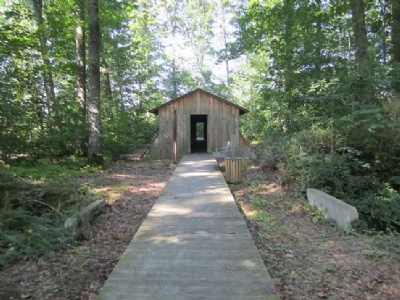Gurs
Just outside a small town called Oloron-Sainte-Marie in southwestern France, about eighty kilometres from the Spanish border, french authorities (Third Republic 1870 – 1940) established in the spring of 1939 a detention camp for Spanish refugees fleeing Franco’s regime. The camp was called Camp Gurs. In the spring of 1940, about 4,000 German jews who fled Germany and many left-wing activists were detained. After France’s surrender in June 1940 and the division of France into an occupied and a free zone, Gurs ended up in the free zone and was taken over by the Vichy regime. The Vichy regime introduced anti-Semitic laws (Statut des Juifs) both in October 1940 and in June 1941 which excluded or degraded the rights of the jews in every aspect of society. The camp consisted of just under 400 barracks and was one of the larger in France (and in Europe). In terms of the number of barracks, it was larger than both Auschwitz I and II combined. The Jews who sat in Gurs did not have to work because the camp was a transit camp on the way to Eastern Europe, however, the Spaniards who sat in the camp were forced to work. Conditions in the camp were nevertheless inadequate, with a constant shortage of supplies and substandard barracks. The camp was guarded by French police and gendarmes without German interference.
After the surrender of France, Alsace and Lorraine were incorporated into the German areas of Baden, Saarland and the Pfalz. In October 1940, local Nazi leaders (Gauleiters) Robert Wagner and Josef Burckel deported some 7,500 Jews from these areas to Vichy France, where they were detained by representatives of the Vichy regime who interned about 6500 of these in Gurs. Of the 7,500 deported to Vichy, about 4,400 were released, emigrated or fled while about 2,400 were forced into labor. During the winter of 1940/41, about 800 Jews died in the camp as a result of diseases and cold. Between October 1940 and November 1943, police detained 18,000 Jews. Gurs also became a assembly place for Jews who had been in small camps in southern France.
Between August 1942 and March 1943, the Vichy regime handed over 3907 jews imprisoned in Gurs to the germans. These were first deported to Drancy outside Paris and then put on one of the to total of six transports bound for eastern Europe, mainly to Auschwitz. Another 2,000 Jews were deported by the Vichy regime from Gurs to Auschwitz and Sobibor via Drancy. The Vichy regime closed the camp in November 1943, and by then some 22,000 people had passed the camp, 18,000 of whom were Jews. About 1,100 died in the camp. The Vichy regime opened the camp for a short period in the summer of 1944 to imprison resistance fighters. When France was liberated in August 1944, French authorities used the camp to detain German prisoners of war and French collaborators. The camp was deliberately burned down in December 1945 and a forest was planted.
Current status: Demolished with museum (2011).
Location: 43°16'24.22" N 0°44'21.09" W
Get there: Car.
Follow up in books: Weisberg, Richard H: Vichy Law and the Holocaust in France (1998).











The Museum opened in 2007 and is open around the clock. It is unmanned, small, but gives the visitor good information about the history of the camp and how it looks today through photographs, TV screens and a computer virtual information screen. Outside the museum, the area is divided into two parts. One part is called the Memorial path and consists of an approximately 150 meter long railway track that runs along a platform up to a reconstructed framework of a prisoner hut. This is to symbolise the deportations from Gurs to the extermination camps in Eastern Europe. From the prison barracks there is a road to the cemetery.
The Second part is located in a part of the former camp area and is called Historical path. Along a trail in the forest of about a kilometer, the visitor get to know the camp through a number of information boards. There is also a reconstructed prisoner hut that unfortunately looks too new and therefore feels completely misplaced. There are several museums that have reconstructed barracks but they have at least been reconstructed so that they at least look old and worn. In other parts of the forest there are sign posts showing which part of the camp was located at that spot. Overall, Gurs is an interesting museum where the museum is different from others. Englis information is available at the museum, but only in french, spanish and german och the memorila ground.